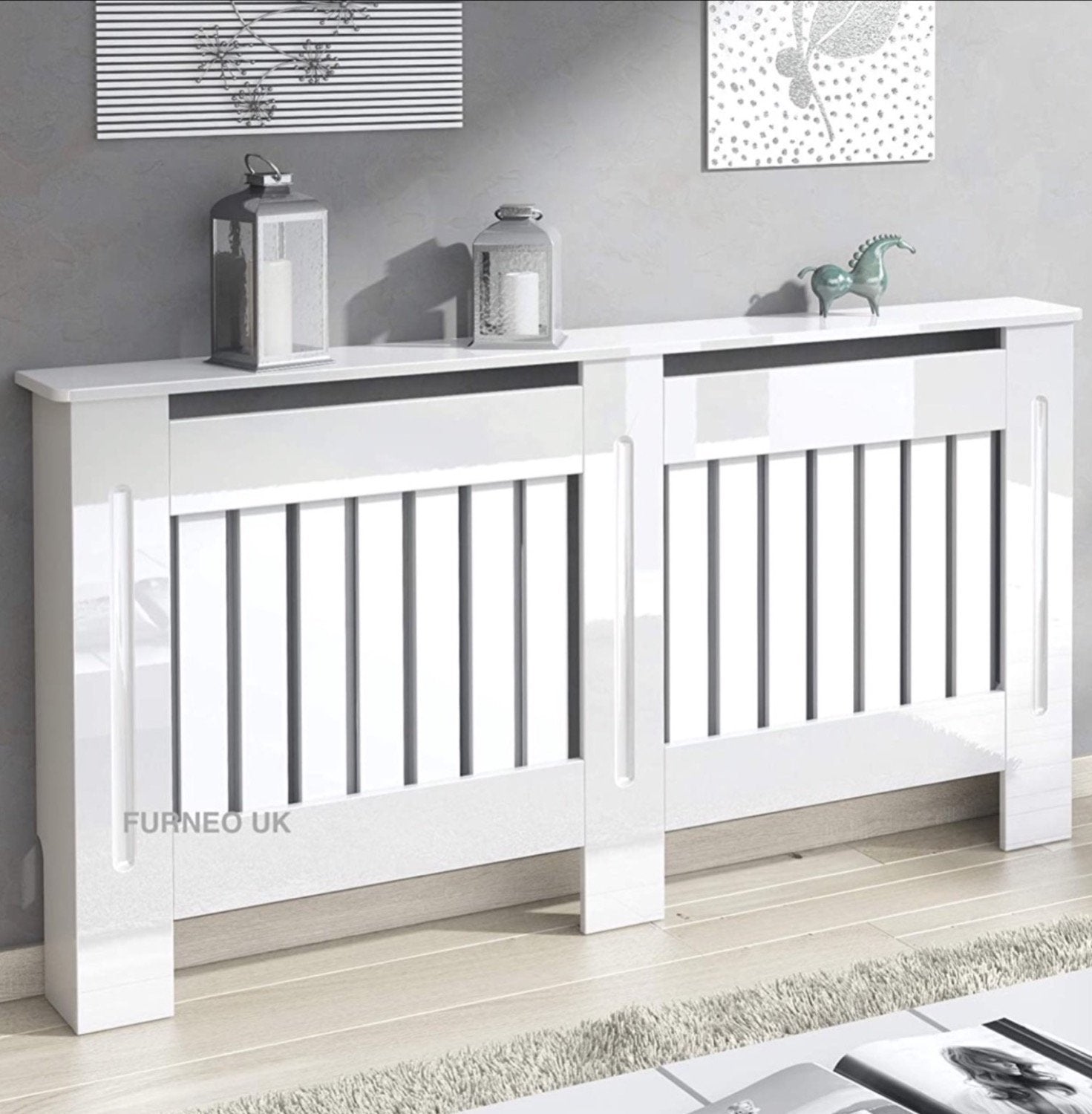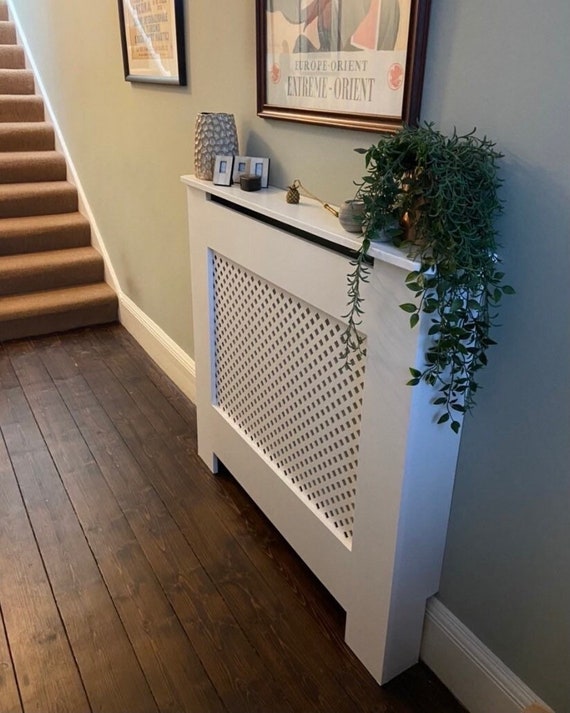Radiator Covers: Comprehending Products, Designs, and Benefits
Radiator covers serve both useful and visual functions within a home, offering an array of products such as mdf, hardwood, and metal to suit numerous design preferences. Picking the best radiator cover involves understanding the subtleties of products, designs, and their connected advantages.
Sorts Of Materials


Wood covers, often crafted from hardwoods such as oak or maple, offer a timeless, cozy look that enhances typical interiors. Their longevity and capability to be tarnished or repainted contribute to their flexibility. Metal covers, generally made from steel or aluminum, are preferred for their toughness and modern appearance, commonly featuring sleek lines that enhance contemporary spaces.
MDF, a manufactured wood product, is popular for its cost-effectiveness and simplicity of personalization. It can be painted or completed to match existing design while providing a smooth surface. Plastic covers, while much less common, are light-weight and immune to dampness, making them ideal for moist atmospheres.
Eventually, the option of material for a radiator cover need to straighten with the homeowner's style preferences, useful requirements, and the certain atmosphere where the cover will certainly be mounted. Each material supplies an unique character, making sure that there is an option to fit every preference and setting.
Popular Design Styles
Stressing aesthetic charm, preferred design styles for radiator covers show a variety of preferences and indoor style patterns. Typical layouts usually include complex woodwork and elaborate describing, making them ideal for classic or vintage-inspired insides. These covers commonly incorporate sculpted elements, giving a cozy and inviting feel to any type of space.
In contrast, contemporary designs concentrate on minimal aesthetic appeals, characterized by tidy lines and understated elegance. Materials such as metal or sleek wood with a smooth coating are commonly used, allowing these covers to blend seamlessly right into contemporary areas. Industrial designs, on the various other hand, embrace resources like subjected steel and concrete, adding a strong declaration to loft or city settings.
For those seeking an unique touch, bespoke designs offer modification choices that deal with specific preferences, enabling homeowners to choose shades, patterns, and materials that match their style. Additionally, farmhouse-style covers incorporate rustic components, including troubled wood and basic forms that evoke a relaxing, nation beauty.
Benefits of Radiator Covers
Radiator covers not only improve the visual allure of an area but also use numerous practical benefits that make them a beneficial enhancement to any kind of home. Among the primary advantages is security, especially in families with family pets or youngsters. Covers lower the threat of burns from hot radiator surface areas, guaranteeing a safer setting.
Additionally, radiator covers can improve energy performance. By routing warmth into the area as opposed to enabling it to run away, they assist keep a regular temperature, minimizing home heating expenses with time. This is specifically advantageous in older homes where radiator systems may be less reliable.
An additional remarkable advantage is sound reduction. Radiators can in some cases produce unwanted audios during operation, and covers can assist smother these noises, contributing to a more calm space. Radiator covers can be practical, providing added storage or screen area, thus maximizing the utility of often-overlooked areas.
Last but not least, imp source they can secure radiators from dirt and particles, which can hinder performance and boost maintenance needs. With these combined benefits, radiator covers become a functional service for enhancing both the capability and style of any type of home environment.
Installment Considerations
Mounting radiator covers requires mindful consideration to make certain both functionality and safety and security (Radiator cover). Evaluate the measurements of your radiator and the surrounding space to ensure a correct fit. Exact dimensions are vital; an ill-fitting cover can obstruct heat circulation or produce security hazards
Next, evaluate the material of the cover. While timber offers visual allure, metal choices may provide far better toughness and warm resistance. Take into consideration the weight of the cover as well; much heavier covers may need additional assistance or reinforcements to stay clear of sagging or damage with time.
Ventilation is an additional vital aspect. Covers must include adequate airflow to avoid getting too hot and maintain reliable home heating. Try to find designs with slats or perforations that allow warm to distribute without obstruction.
Furthermore, make sure that the cover is firmly mounted to avoid accidents, specifically in homes with children or family pets. Radiator cover. It's recommended view to comply with the supplier's installation standards carefully and, if required, get in touch with a specialist for intricate installments
Upkeep and Care Tips
Proper maintenance of radiator covers is vital for guaranteeing their durability and optimal efficiency. For repainted or timber covers, consider an ideal gloss or protective finishing to maintain their appearance.
Check the covers periodically for signs of wear or damages, such as splits or peeling paint. Dealing with these problems quickly can stop additional deterioration. Make certain that the covers are safely fastened and look for any kind of loose screws or installations, as resonances from the radiator can loosen them over time.
In colder months, prevent positioning hefty items or ornamental items in addition to the radiator covers, as this can impede heat distribution and cause unneeded stress to the framework. Take into consideration seasonal maintenance by eliminating the covers for thorough cleaning and inspection during warmer months when the home heating system is inactive. Embracing these simple care ideas will enhance the performance and aesthetic appeal of your radiator covers, guaranteeing they serve their objective effectively for years ahead.

Verdict
In recap, radiator covers work as visual and original site functional improvements to domestic spaces. The diverse range of materials, consisting of hardwoods, metal, plastic, and mdf, enables alignment with different layout styles such as conventional, modern, industrial, and farmhouse. The benefits of these covers prolong beyond safety and energy efficiency to consist of extra storage and dirt protection. Careful consideration of installation and upkeep further makes certain the longevity and effectiveness of radiator covers in any kind of home environment.
Radiator covers serve both useful and visual objectives within a home, using an array of products such as mdf, steel, and hardwood to match different layout preferences. Picking the best radiator cover involves understanding the nuances of products, designs, and their associated advantages.Stressing aesthetic charm, preferred design styles for radiator covers show a variety of tastes and interior layout fads.Radiator covers not just enhance the aesthetic charm of a space but additionally provide several sensible advantages that make them a beneficial addition to any home. Take into consideration the weight of the cover as well; larger covers might call for added assistance or reinforcements to stay clear of sagging or damage over time.